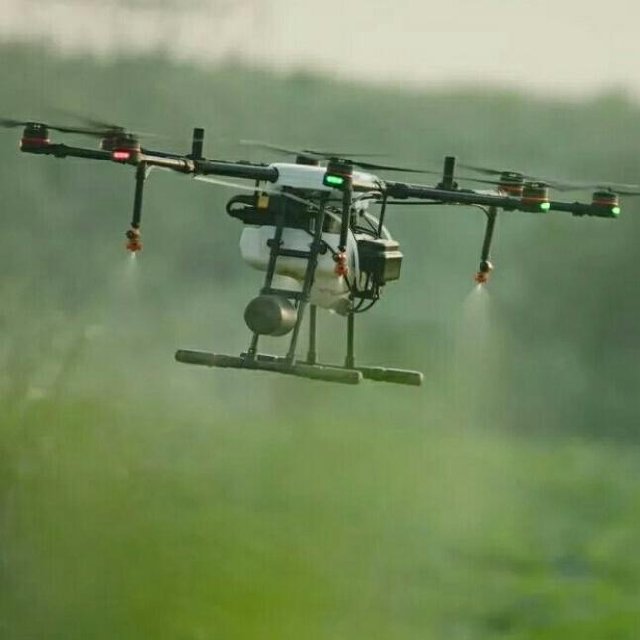Introduction
The weather is getting cold, not only our human body needs to add clothes to keep warm, but also the UAV Lithium Battery needs to be heated to keep warm. Do lithium batteries also need clothes? The answer is: yes! Today, let's talk about the impact of low temperature environment on lithium batteries.
For lithium-ion batteries, both national and enterprise standards have strict limits on the lower limit temperature of discharge. No less than -20℃. As for the charging temperature, it will not only stipulate the minimum temperature like discharge. It will clearly stipulate that charging at a low temperature can only be a small rate. It can not be fully charged. The charging and discharging process of its internal chemical reaction, the reaction rate of the low temperature will make the battery down. This results in lifetime, discharge power, voltage sag, and flight dynamics being insufficient.
Batery charging
The following is a schematic diagram of a battery charging voltage at different temperatures:

From the figure, when the temperature decreases, the discharge voltage of the battery decreases greatly. So that the battery will reach the cut-off voltage faster when discharging at low temperature, resulting in the low temperature discharge capacity is significantly lower than the normal temperature capacity.
When lithium-ion batteries are charged at low temperature, lithium ions may not be embedded in the graphite anode. This reaction will consume lithium ions that can be charged and discharged repeatedly in the battery. This can greatly reduce the battery capacity. However, it can be recovered after charging and discharging at room temperature, which is a reversible capacity loss. But low temperature charging can lead to lithium evolution, which is a permanent capacity loss.
As the voltage platform of lithium-ion battery is lower when discharging at low temperature, the capacity of discharging at low temperature will be significantly reduced, but this loss will be automatically compensated with the charging and discharging at normal temperature, which is a reversible loss. However, for low temperature charging, too low temperature or too high rate will cause irreversible lithium dendrite formation and irreversible capacity loss of the cell, and affect the safety performance of the battery.
How to better use uav lithium battery in winter?
Attention! The overall performance of lithium polymer batteries is relatively delicate. If the flight needs to be carried out at lower temperatures, it must be used and maintained in strict accordance with the correct method. Otherwise, it is easy to cause swelling and irreversible damage to the batteries.
1.Before takeoff:
Before flight, be sure to fully charge the battery to ensure that the battery is in a high voltage state.
2.preheating preparation:
Fully preheat the battery to more than 25 degrees, reduce the battery internal resistance. It is recommended to use a battery preheater, hand warmers, and baby warmers to preheat the battery.
3. pre-flight test:
Keep the aircraft hovering 1 meters or so after the aircraft takes off, let the battery use internal heat, let itself fully preheat, reduce the internal resistance of the battery, gentle operation, do not violently hit the rod flight to increase the discharge rate damage cell.
4.Battery setting:
30-40% is recommended for low battery alarm in winter. Prevent the low temperature environment caused by the rapid decline of electricity.
Lithium battery maintenance : ① avoid overcharge and overrelease, overcharge and overrelease will greatly reduce the service life of lithium battery.
② long time storage, storage temperature is recommended at 0-25℃, it is recommended to keep the battery voltage at 3.85V, and every other month for a complete charge and discharge of the battery to maintain the battery activity.
③ avoid discharge beyond the battery load capacity, otherwise the battery will be seriously hot.
④ Avoid battery drop. If the drop occurs, it may cause battery internal short circuit and battery spontaneous combustion.
⑤ lithium battery after the use of large current, there will be a certain amount of heat, the battery should be cooled for 20-30 minutes in charge, otherwise it will affect the battery life.
⑥ lithium battery long-term use of large C number charging, compared with long-term use of low C number charging lithium battery, the life will be lower.
6.UAV Lithium Battery:
① When the device is not in use, take out the battery and store it separately.
② do not place the battery near the heat source, flammable and explosive products.
③ Avoid placing the battery outdoors in low temperature for a long time, otherwise the battery activity will be greatly reduced, and even cause irreversible decline in the performance of lithium batteries.
④ Keep the storage environment dry and do not place the battery in a place where water leakage, snow and ice melt and moisture may occur.
⑤ Do not place the battery for a long time under the state of complete discharge, so as to avoid the battery entering the over-discharge state and causing damage to the battery, otherwise it will not be able to restore the use. It is recommended to recharge and discharge once every 2-3 months to ensure battery activity. For long-term storage, the device must be stored in an environment whose temperature ranges from -10°C to 45°C.

